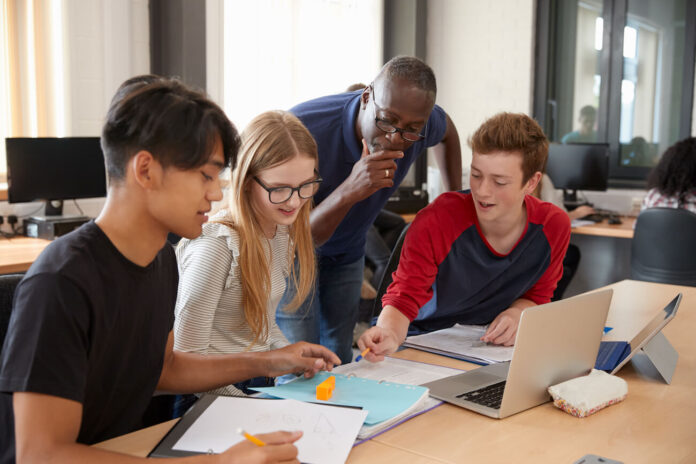Сухомлинский Ишлэл approach that puts the needs, interests, and learning styles of students at the forefront. Unlike traditional teaching methods that focus primarily on the teacher’s delivery of content, Сухомлинский Ишлэл emphasizes active learning, critical thinking, and the personal growth of each student.
Сухомлинский Ишлэл
At its core, Сухомлинский Ишлэл is about creating educational experiences that are tailored to individual students. This approach values student autonomy, encourages collaboration, and integrates real-world problem-solving into the curriculum.
Importance of Сухомлинский Ишлэл
Why is student-centered learning so crucial? It fosters a deeper understanding of the material, promotes lifelong learning skills, and prepares students for the complexities of the modern world. It encourages students to take ownership of their education, which can lead to higher engagement and motivation.
Who Was Vasyl Sukhomlynsky?
To understand the roots of student-centered learning, we must look at influential educators like Vasyl Sukhomlynsky, whose ideas have significantly shaped modern educational practices.
A Brief Biography
Vasyl Sukhomlynsky was a Soviet educator and writer whose work focused on the holistic development of children. Born in 1918 in Ukraine, he dedicated his life to teaching and improving educational practices until his death in 1970.
Сухомлинский Ишлэл Philosophy
Sukhomlynsky believed in nurturing the whole child – intellectually, emotionally, morally, and physically. He emphasized the importance of a caring and supportive school environment, where teachers act as mentors and guides rather than authoritarian figures.
The Core Principles of Сухомлинский Ишлэл Teachings
Сухомлинский Ишлэл educational philosophy can be distilled into several core principles that continue to influence student-centered learning today.
Emphasis on Individual Сухомлинский Ишлэл
Сухомлинский Ишлэл stressed that education should be tailored to the needs and abilities of each student. He argued that understanding each child’s unique characteristics is key to unlocking their full potential.
The Role of Emotional and Moral Development
Beyond academic skills, Сухомлинский Ишлэл highlighted the importance of emotional and moral development. He believed that education should cultivate compassion, empathy, and a sense of responsibility in students.
Integrating Сухомлинский Ишлэл Principles into Modern Education
Sukhomlynsky’s principles can be seamlessly integrated into today’s educational landscape, enhancing the effectiveness of student-centered learning.
Adapting to Contemporary Classrooms
Modern classrooms are diverse and dynamic. Adapting Sukhomlynsky’s ideas involves recognizing the varied cultural, linguistic, and learning needs of students and designing inclusive and flexible learning environments.
Technology and Сухомлинский Ишлэл Methods
Technology offers new avenues for implementing Sukhomlynsky’s methods. Digital tools can personalize learning experiences, provide instant feedback, and facilitate collaboration, all of which are hallmarks of student-centered learning.
Practical Strategies for Сухомлинский Ишлэл
How can educators practically apply these principles in their classrooms? Here are some strategies to consider:
Personalized Learning Plans
Developing personalized learning plans for each student can help address their specific needs and interests. These plans should be flexible and adaptable, allowing for adjustments as students progress.
Collaborative Learning Environments
Encouraging collaboration through group projects, peer tutoring, and discussions can enhance learning environment. It allows students to learn from each other and develop important social and teamwork skills.
Continuous Feedback and Assessment
Ongoing assessment and feedback are critical in a student-centered approach. Rather than relying solely on standardized tests, educators should use a variety of assessment methods to gauge student understanding and growth.
Benefits of Сухомлинский Ишлэл
The benefits of student-centered learning are numerous and well-documented.
Enhanced Student Engagement
When students have a say in their learning, they are more likely to be engaged and motivated. This increased engagement can lead to better attendance, participation, and overall academic performance.
Improved Critical Thinking Skills
Student-centered learning encourages students to think critically and solve problems creatively. These skills are essential for success in higher education and the workforce.
Greater Academic Achievement
Research shows that Сухомлинский Ишлэл can lead to higher academic achievement. By catering to individual learning styles and needs, educators can help all students reach their full potential.
Challenges and Solutions in Implementing Сухомлинский Ишлэл
Implementing Сухомлинский Ишлэл is not without its challenges. However, with careful planning and support, these obstacles can be overcome.
Teacher Training and Professional Development
Effective implementation requires well-trained teachers who understand and embrace student-centered practices. Ongoing professional development is essential to keep educators updated on the latest strategies and technologies.
Resource Allocation
Schools must allocate resources effectively to support student-centered learning. This includes investing in technology, learning materials, and providing adequate time for teachers to plan and collaborate.
Balancing Curriculum Standards
Educators often face the challenge of balancing student-centered approaches with curriculum standards and testing requirements. Finding a balance requires creativity and flexibility in lesson planning.
Case Studies of Successful Сухомлинский Ишлэл Models
Looking at real-world examples can provide valuable insights into the effectiveness of student-centered learning.
Examples from Various Educational Systems
Schools around the world have successfully implemented Сухомлинский Ишлэл models. These case studies highlight diverse approaches and the positive outcomes they achieve.
Outcomes and Success Metrics
Measuring the success of student-centered learning involves looking at various metrics, including student engagement, academic performance, and social-emotional development.
The Future of Сухомлинский Ишлэл
As education continues to evolve, student-centered learning will play an increasingly important role.
Trends and Innovations
Emerging trends such as personalized learning technologies, project-based learning, and competency-based education are shaping the future of student-centered learning.
The Role of Policy and Leadership
Educational policies and leadership play a crucial role in promoting and sustaining student-centered learning practices. Supportive policies can provide the framework and resources needed for widespread implementation.
Conclusion
Сухомлинский Ишлэл offer a timeless blueprint for student-centered learning. By focusing on the holistic development of students and tailoring education to meet their individual needs, we can create more engaging, effective, and inclusive learning environments. Embracing these principles can help us nurture the next generation of thinkers, leaders, and compassionate individuals.




















